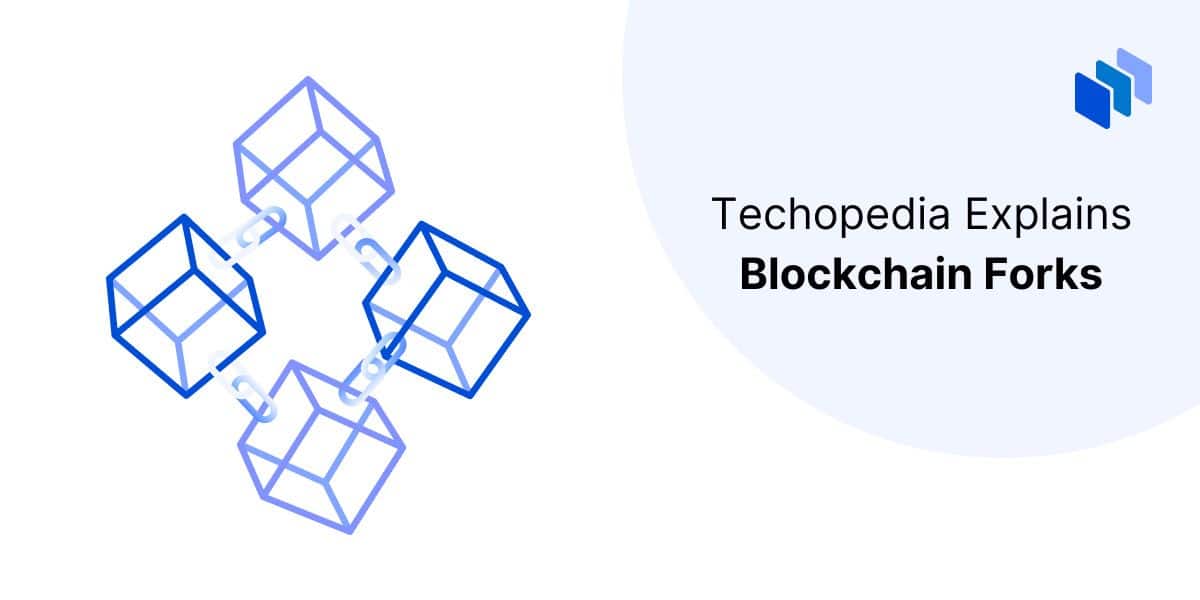What is a Blockchain Fork?
A blockchain fork is essentially a code modification that creates a new version of the original chain but with key alterations desired by a select group of users.
Forking is common throughout the open-source software industry whenever coders want to create specialized functions on an existing platform. In many cases, projects are forked and reworked multiple times, leading to widely diverse service and application sets that enable high degrees of customization.
Blockchains are governed by rules, aka protocols, that are agreed upon by their members. A forked blockchain, therefore, is usually created when one group wants to operate under a different set of rules.
This may be the allowable size of the blocks in the chain, the rewards granted to participants, or a wide range of other considerations.
How are Blockchains Forked?
The actual forking process is rather simple. When a certain number of participants want to set up a fork (usually half, at minimum), they merely agree to a new set of rules and start creating blocks from the original chain.
Anyone wanting to join the fork from that point can do so as long as they abide by the rules, but any additions they choose to make to the original chain must take place under its rules.
There are basically two kinds of forks, both of which establish different relationships with the original chain.
1. A hard fork is a clean break from the original. Its protocols are generally incompatible with its parent chain, and nodes established on the pre-fork chain are not able to process transactions on the fork, and vice versa.
Sometimes hard forks are planned, in which the entire community abandons the original and transitions to the fork.
In other cases, hard forks result in two separate chains, with each community going its own way, often with its own currencies and tokens.
2. Soft forks, on the other hand, maintain compatibility with the original, which means existing nodes are allowed to update the fork provided it abides by its rules.
This is much easier to accomplish given that only a certain number of nodes are required to participate in the fork rather than all nodes, as is the case with a hard fork.
Soft forks also require fewer votes to enact, whereas hard forks typically need universal or near-universal consent.
What are the Benefits of a Forked Blockchain?
A blockchain fork can bring a wide range of benefits to users, although not necessarily to participants of the original chain.
Earlier this year, a hard fork on the Ethereum exchange known as the Shanghai Upgrade allowed members to unstake their ETH (Ether) holdings from Ethereum’s Beacon Chain after its rules regarding cash-outs were changed. Essentially, the fork made it easier for the community’s validators to trade their ETH coins for other currencies.
Meanwhile, a recent soft fork to the Bitcoin protocol called SegWit (Segregated Witness) expanded the transaction capacity of BitCoin blocks by separating out the digital signature of the transaction from the transaction data itself.
This allowed for more transactions per block without altering the size of each block. In this way, the fork remained compatible with the parent blockchain, and users could decide for themselves whether or not they wanted to use SegWit.
What are the Drawbacks?
Most forks do not have a long shelf-life unless they provide some material benefit to their users. But sometimes forked chains, even hard ones, can pose threats to the original.
In the Shanghai Upgrade, for example, validators are able to convert their ETH holdings much sooner than they would under the old rules, but they can only redeem a handful of coins at a time through a somewhat convoluted process.
And what impact, if any, this will have on the value of ETH is unclear.
How are Blockchain Forks Being Used Today?
Increasing the functionality of a blockchain is the primary goal of most forks, but the new rules under a forked chain can address a wide range of activities.
In many cases, as in the examples above, gaining greater control of financial assets is a primary driver. Most hard forks, in fact, center on creating all-new coins or other assets that can be mined and sold under new rules.
Other forks are aimed at enhancing security or improving recoverability options after a cyberattack or a normal outage. Hard forks, in particular, can be used to recover funds lost during a DAO (decentralized autonomous organization) attack by basically reversing the transactions.
Soft forks cannot do this due to their interoperability with the original chain.
Forks can also allow members to experiment with new algorithms and other technologies or to pursue new business strategies while limiting exposure to the entire chain. Sometimes forks happen accidentally due to software bugs, networking issues, or simple node misconfiguration.
No matter how they are created, however, blockchain forks will continue to impact the role that cryptocurrencies and other digital assets have on the world economy.
And just like with any form of commerce, there will likely be winners and losers with each fork.






